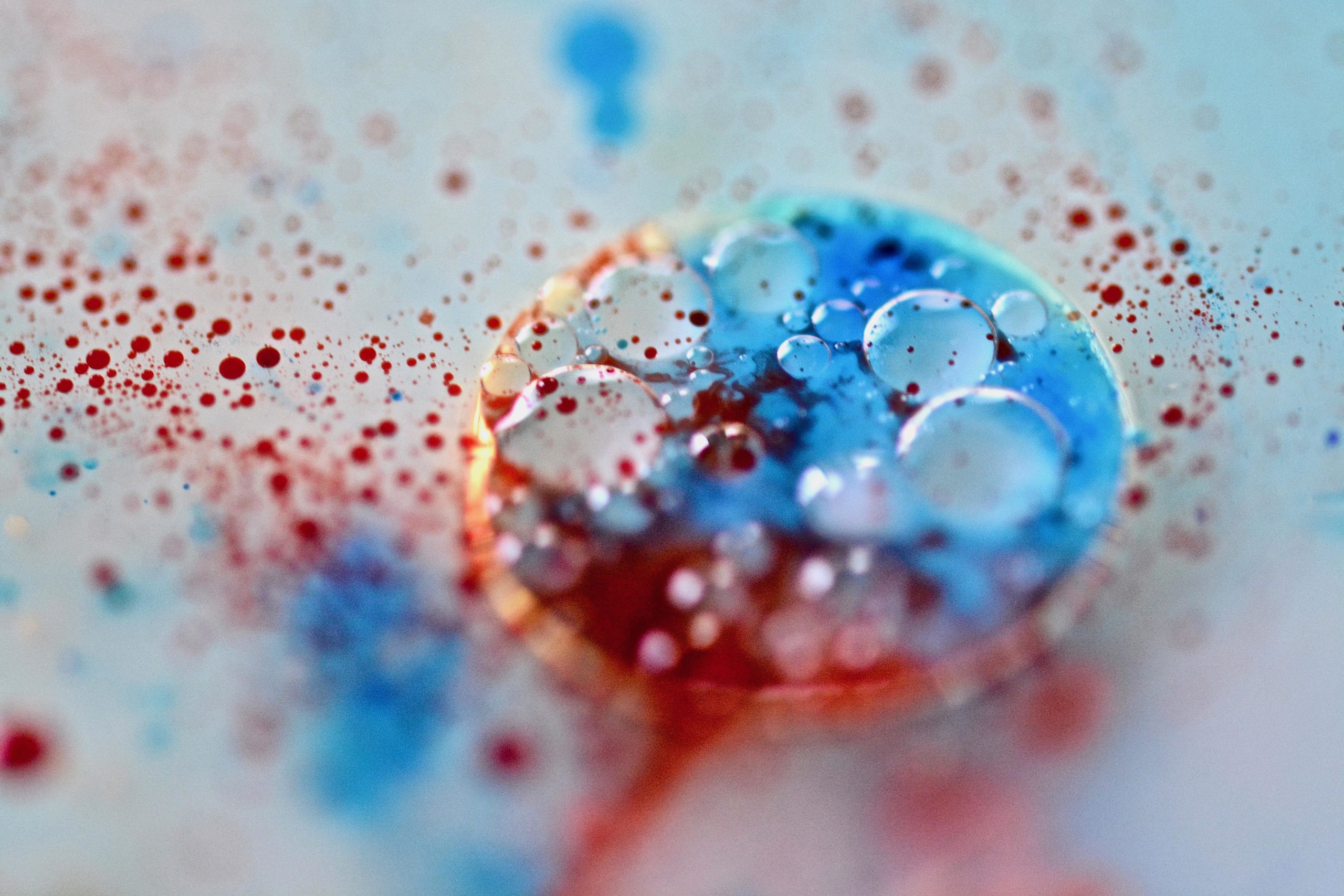2019 Best in Photography – Monica Babits

A Picture of a Mixture
Science and art go together like oil and water! At least, in this piece they do. I had loads of fun mixing together oil, water, milk, and food coloring in a shallow bowl; then I used a Nikon D5200 with a macro lens to capture the unique result.
As a student studying chemistry, I spend a lot of time learning about the macroscopic effects of microscopic compounds. The heterogeneity we see in this mixture is a result of the polarity of the molecules involved. The ability of an element to attract its shared electrons is called electronegativity; In a molecule, differences in electronegativity result in slight positive and negative charges across the bond (poles). Water is an example of a polar molecule, where the oxygen acquires a partial negative charge, and hydrogen acquires a partial positive charge. The positive dipole in one water molecule are attracted to the negative dipole in another water molecule, and vice versa: these are called hydrogen bonds. However, If you have the same element bonding to itself (or elements with similar electronegativities), there is no difference in electronegativity and thus this effect does not occur. Oil, along with other fats, are composed of carbon and hydrogen which have negligible differences in electronegativity, and are therefore nonpolar molecules (note: nonpolar molecules also have some very weak attractive forces called Van-Der Waals).
In a solution where there are both polar and non-polar molecules, like the one in this photograph, an interesting effect occurs. The polar molecules like water are attracted together and exclude the oil molecules, and consequently the two components of the mixture become distinct from one another. In the photograph, the milk-water mixture serves as a backdrop for different coloured oil droplets and air bubbles. If I were to shake this mixture, all the oil molecules would float to the top and the water molecules would sink to the bottom, forming two layers (however, that wouldn’t be nearly as aesthetically pleasing, so I dropped in the different components carefully).
So, why should we care about molecule polarity? Because without it, life wouldn’t exist. For example, hydrogen bonding, a consequence of water’s polarity, and its cohesive effect allow it to defy gravity and nourish the leaves of plants as well as reach the smallest capillaries of your body. The separation between nonpolar lipids and different polar elements give our cells structure and allow important nutrients to be transported to the right areas of our body before being broken down. So, the next time you’re thinking about the inconvenience of shaking your salad dressing, consider the important applications of molecule polarity!
